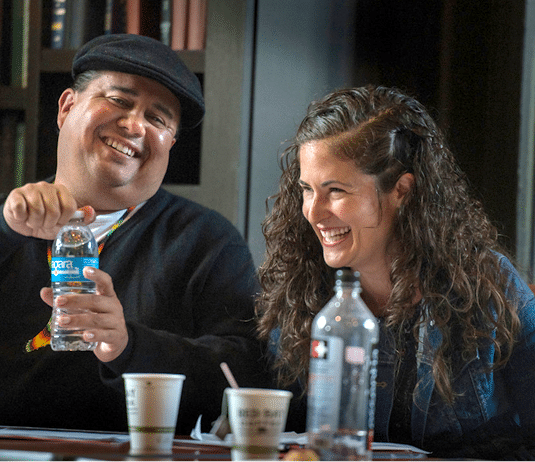I was born in New Mexico and grew up in a large, hard-working family. My visionary Mexican-American parents pushed us to pursue a college education and to never settle for anything less than our very best. Their guidance led me to a career that I love and kept me part of a rich culture and community that I support.

When the Latino Community Foundation invited me to join a conversation with the members of its first Latino Nonprofit Accelerator cohort, I was excited — this was an opportunity to hear directly from Latino nonprofit leaders. The discussion session was billed as a “Candid Session with Funders,” and I came prepared to offer fundraising advice. Having been on the grantseeker side for much of my career, I thought I understood the challenges that grantees face today. I expected a tough but productive conversation.
But the discussion floored me.
Latino nonprofit leaders were frustrated, and rightly so. Not only do Latino-centric nonprofits currently get a meager 1.1% of total American philanthropic dollars, but their communities are under attack by the current administration.
It’s rare to get the real story when you’re a funder. Nonprofit leaders who are struggling to keep their organizations viable don’t often risk their funding by telling program officers how philanthropy is letting them down. But at this Latino Community Foundation session, nonprofit leaders were able to share their truth — truth I needed to hear.
I’m grateful these people trusted me enough to honestly share their experience.
Five Ways We Can Do Better
While many things I heard that day stuck with me, five of the suggestions the group had for funders rose to the top:
- If the answer is no, say “no”
When funders fail to say no clearly, respectfully, and without delay, they make things more difficult for nonprofits. - Go on site visits
Funders need to meet with the staff and community, and also set expectations about their availability from the beginning. - Coordinate a community of support
Proactively helping nonprofit leaders who will be losing funding is one potent way we have of maintaining continuity. - Make introductions
When we know other funders who might be a good funding match, we have to make those connections. - Be reachable and responsive
Remember: this is about people. If we don’t make ourselves available, we’re undercutting the point of the work.
My responsibility at the Latino Community Foundation event was to listen — and the nonprofit leaders there needed to be heard. Now, I’m inspired to take action.
What I’m Doing Now
As a co-chair of two funder collaboratives, I am sharing these and other insights with colleagues in philanthropy. I’m working to ease the reporting burden of shared grantees by coordinating joint site visits and exploring how to align reporting. I’m increasing the time I allot and the lengths I’ll travel to participate in site visits. I’m striving to be as upfront as possible when funding is unlikely and to help organizations navigate a philanthropic landscape that doesn’t always make sense.
After the Latino Community Foundation session, I went to visit all four of the organizations that extended invitations. I was honest about my funding limitations, but they were eager to host me nonetheless. I met the leaders and staff of Communities United for Restorative Youth Justice (CURYJ), One Day at a Time (ODAT), HOMEY, and Digital NEST. They were proud to walk me through the history of their organizations, point out the art decorating the walls that highlighted the strength and love in their communities, and share stories of the many challenges their participants and staff had navigated and conquered.
As a sector, we need to take the lessons we’re learning here to heart and put people at the center of our work.
In philanthropy, it’s not only our investments that matter; it’s how we show up for our community. It’s how we treat our nonprofit leaders. It’s how we learn from the organizations we support and how we translate that learning into action.
This Is Who I Am
One of the toughest lessons this Latino Community Foundation session taught me was to bring my full authentic self to the table. I opened up about my own family and our unlikely journey — from humble beginnings in Albuquerque, New Mexico to me and my four siblings, all Harvard grads, being featured on the Today Show. But that’s only part of the story. I learned it was equally important to reveal my family’s struggles – with addiction, suicide, and incarceration.
That is the complete story. And all of it helps shape who I am as a woman, a Latina, a daughter, a mother, and even a funder.
The time is now. For those looking to expand on this conversation with me, I recommend the new book, Unicorns Unite: How Nonprofits and Foundations Can Build Epic Partnerships. The work and this discussion is far from over. We must tackle it all together.
We’re always demanding more of our grantees. We ask them to serve more clients, to increasingly diversify the support they offer, and to prove greater impact.
Now, it’s time for us to demand more of ourselves.


Thank you for sharing your inspiring story, Elena, and for putting your whole self into your work.